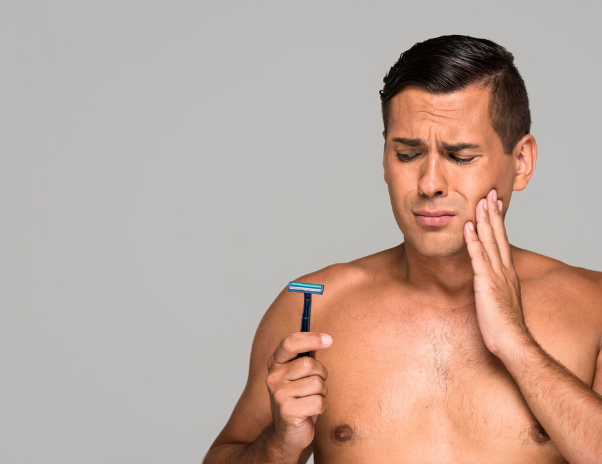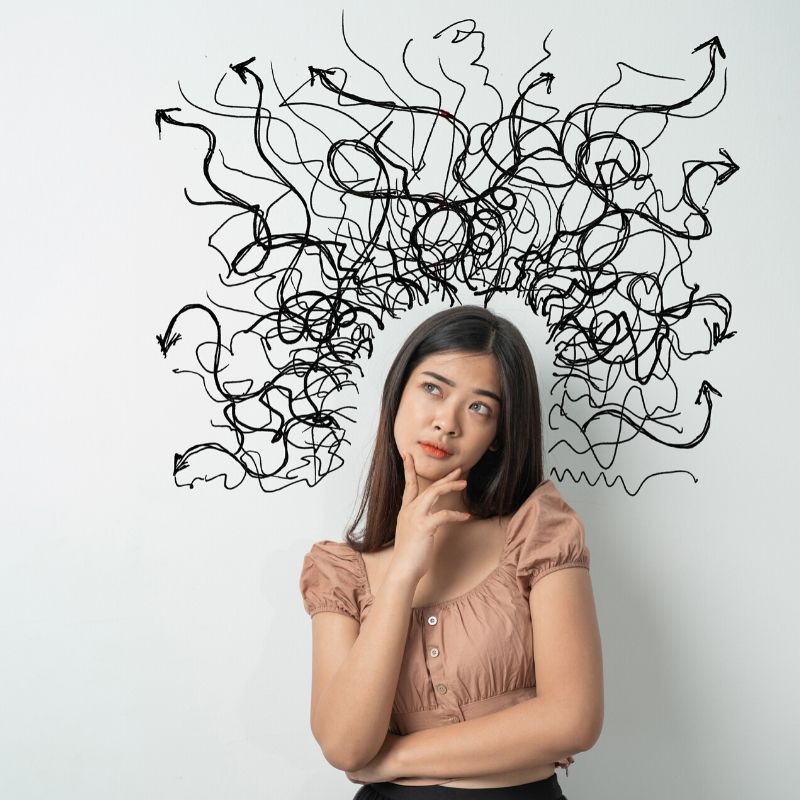
Posted date on Jun 23, 2020
Hairy Affair - Excessive Facial Hair among Women | Hirsutism and more by Dr. Divya Sharma
Hair is one of the most important accessories for a woman and good hair is a sign of great inner health. But many times, I see several women very distressed about the hair growth in unwanted places. They are not only worried but even embarrassed about hair on their face and other areas. A lot of women before COVID19 used to seek hair removal in parlours and salons to get rid of this not-so-feminine feature. It is more of a cosmetic concern for them but for Dermatologists, facial hair could be a sign of underlying skin and endocrine disorders.
In this blog, we talk about unwanted hair on face and other areas, its causes and treatment.
Q-1) What is the definition of unwanted facial hair?
Ans- There are two types of hair – terminal and vellus hair. Terminal hair is dark, coarse hair which is similar to the ones found on the scalp, underarms. Vellus hair is the fine hair found on the face and body in women. In women, the presence of thick, coarse hair on androgen dependent areas like upper lips, chin, centre of chest, lower abdomen and thighs is defined as hirsutism. If the vellus hairs are more, it is considered as hypertrichosis and not hirsutism. But if the patient feels awkward about unwanted hair but scores less still we label as ‘patient perceived hirsutism’.
Q-2) How much facial hair is too much?
Ans- Hirsutism is a clinical diagnosis based on the Ferriman-Gallwey (FG) score, which rates hair growth from 0 to 4 in 9 androgen-dependent areas. In the US general population, a normal score is less than 8; mild, 8–15; and severe, greater than 15. The patient is scored on the basis of severity of hair growth in androgen dependent areas (where men normally have hair) like the centre of chest, mid abdomen, upper part of thighs etc. The mere presence of facial hair doesn't make a patient score high on the score but it is cosmetically not appealing.
Q-3) What are the causes for facial hirsutism?
Ans - The most common cause of increased facial hair is Polycystic ovarian syndrome (PCOS) but not all patients suffering from facial hair suffer from PCOS. Around 30% of the patients have no explanation for the cause as their hormone levels are normal. They are labeled as ‘Idiopathic hirsutism’. Late onset congenital hyperplasia is one of the rare causes. Certain drugs like cyclosporine and Sodiumj Valproate may cause hypertrichosis. Other causes include acromegaly, Cushing syndrome, hyperprolactinemia, and thyroid dysfunction
Q-4) How does PCOS cause facial hair and hirsutism?
Ans- PCOS is defined by the presence of at least two of the following three signs: menstrual dysfunction, clinical or biochemical evidence of hyperandrogenemia, and polycystic ovaries on ultrasonography. Other characteristics of PCOS include obesity, infertility, and insulin resistance. Insulin resistance and hyperinsulinemia stimulate the adrenal glands and ovaries to produce more androgens. Hyperinsulinemia also inhibits the hepatic synthesis of sex hormone–binding globulin, which binds testosterone and makes it inactive.
Q-5) How do we evaluate patients of hirsutism at Dr Divya’s Skin and Hair Clinic?
Ans - The patient is evaluated for signs of virilization, including clitoromegaly, acne, deep voice, balding, or loss of typical female body contours. An abdominal and bimanual examination is performed to identify palpable tumors. A skin examination is done to check for acne, striae, or acanthosis nigricans which are the ‘tell tale’ signs of increased insulin levels. The patient's breasts are examined for galactorrhea. We also rule out typical signs of endocrinopathies, such as Cushing syndrome or thyroid dysfunction. Dr Divya Sharma does a detailed examination to rule and treat the cause of facial hair or hirsutism.
Q-6) What are the tests recommended for evaluation of hirsutism?
Ans - We recommend measurement of free tesoterone and Sex Horomne binding globulin levels. In some patients, Dr Divya Sharma also recommends Prolactin and Thyroid levels. DHEAS levels are measured only if Free Testosterone levels are higher.
Q-7) What are the treatment options for increased facial hair in women?
Ans- 7 We divide the treatment into two approaches- Medical and Procedural. The medical treatment targets the androgen levels and improves the Insulin levels. Various options are-
-
Combination oral contraceptives (COC) - reduce serum free androgen levels by increasing sex hormone–binding globulin and inhibiting ovarian androgen production. The Endocrine Society recommends oral contraceptives as the first-line medication for women not trying to conceive. Oral contraceptives containing the progestins norgestimate, desogestrel, or drospirenone are preferred because of their lower androgenic effects and/or their androgen blocking effects.
-
The antiandrogens spironolactone ,finasteride and cyproterone are also effective treatments for hirsutism. Because of their teratogenic effects, they should be used only in women who cannot conceive or who are using birth control. An Endocrinologist opinion is sought before suggesting the treatments.
-
Insulin-lowering agents, such as metformin and pioglitazone have been suggested as alternative therapies. They are not very effective in reducing hirsutism as compared to other symptoms of PCOS.
-
Eflornithine is a topical agent that reduces hair growth through inhibition of ornithine decarboxylase. When used for excess facial hair, results are noticed in about eight weeks.
Q-8) How can I remove unwanted hair from my body?
Ans- There are various methods of hair removal- Shaving, waxing, depilatory creams and Dermatologist led procedures.
1. Shaving- It removes the upper part of the hair follicle but it makes the hair end blunt. Hence the regrowth looks coarser. It may lead to pseudofolliculitis or razor bumps, folliculitis or strawberry skin.
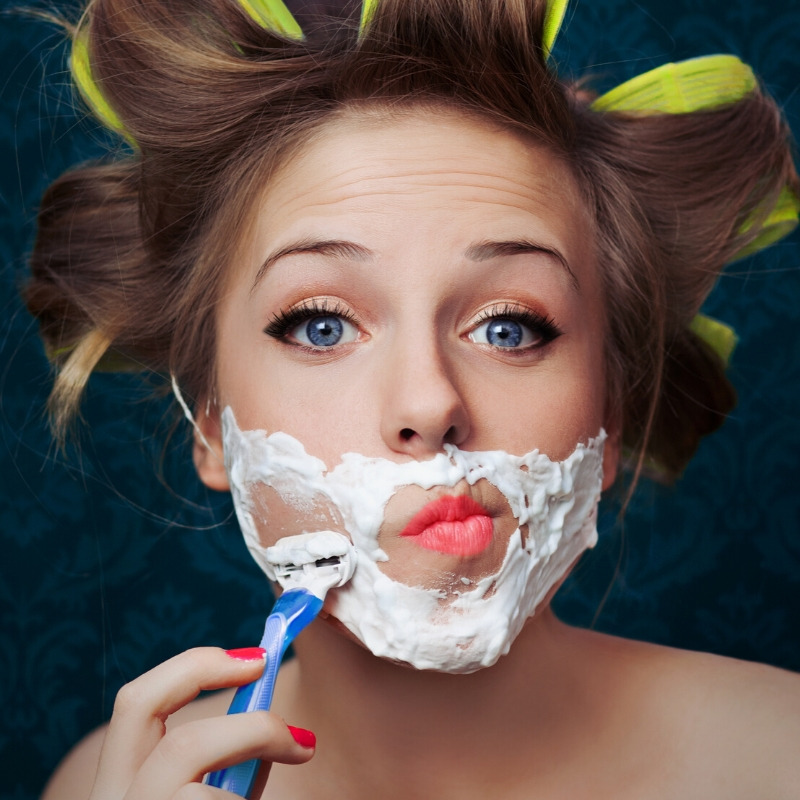
2. Waxing- It is painful, can cause ingrown hair and cause rashes and burns sometimes. It also puts a person at risk of infection.
3. Depilatory creams- contain thioglycolate which can cause allergic contact dermatitis and darkening of skin on long term usage.
4. Laser Hair reduction- If done under expert supervision and FDA approved device, Laser Hair reduction is a scientific, safe and effective procedure. The light emitted is absorbed by the pigment located in the hair follicles, especially the matrix cells and stem cells in the Bulge area of the hair follicle. During the procedure, the laser pulses for a fraction of a second, allowing the hair to absorb the light and heat up. As it heats up, the hair shaft and bulb are damaged which significantly impedes its ability to re-grow.
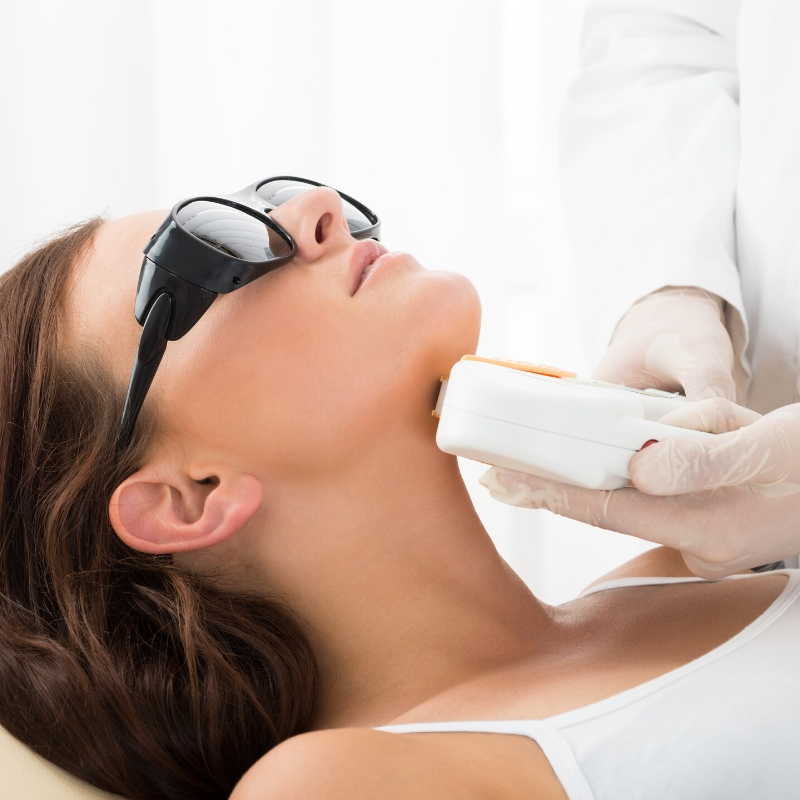
Q-9) Is it safe to do laser hair reduction?
Ans- Laser hair removal does not have any permanent side effects. It is a completely safe procedure and is the only solution to remove unwanted hair from the face and other areas. There may be redness lasting for a few minutes and if done in safe hands, it provides an excellent solution for unwanted hair especially in COVID19 era where parlour may be a risky place to go. At Dr Divya’s Skin and Hair Solutions Clinic, we offer Lightsheer Lumenis diode laser which has an excellent presence and safety record in India and internationally. The treatments are done under safe and aseptic provision and the clinic carries an excellent record of satisfied and happy patients.
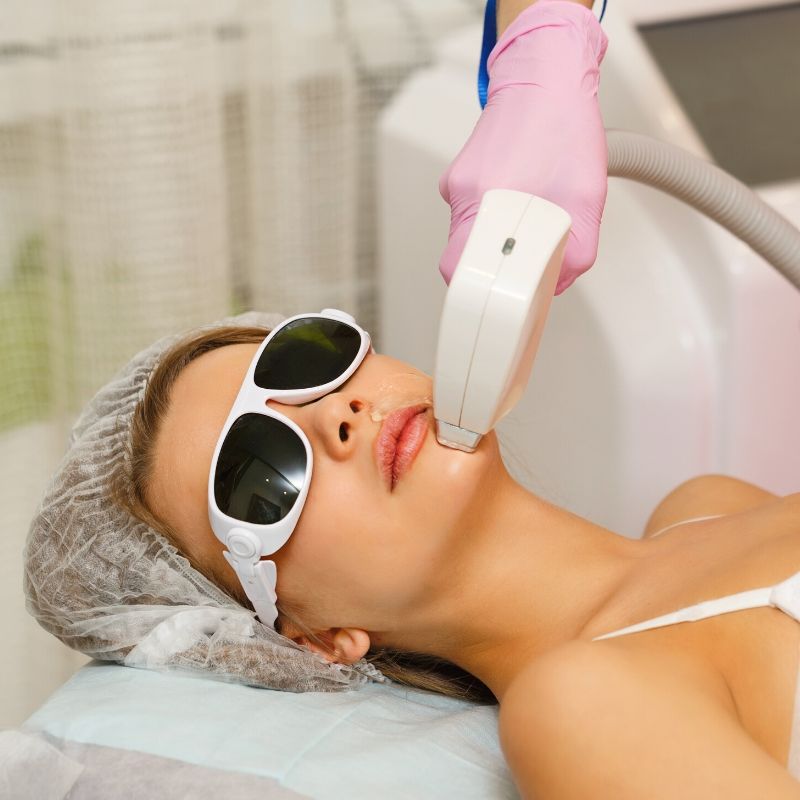
Q-10) Is Laser Hair removal the only way to remove unwanted hair?
Ans- Laser hair reduction is the safest and effective way to reduce unwanted hair from face and body but the patient needs to treat the underlying cause as well. Weight gain, pregnancy and use of medications which can cause hair growth can reverse the results. It is very important that you are under supervision of a Qualified Dermatologist who can give you a complete solution for unwanted hair from face and body parts.



